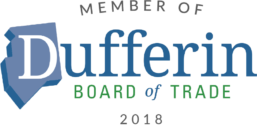The following is based on a client of CFO Alternative Inc. All client names and telling details have been changed to preserve client privacy.
Pat is the controller of a very successful IT company, InTight Software. We were initially introduced by a mutual friend of ours, Richard Mills, at a Superbowl Party Richard hosted. At the party we were discussing the growth of Pat’s company and our work with organizations similar to In Tight. Pat was extremely interested in our process for helping organizations implement job costing processes directly tied to their hard and soft business costs. Pat was very excited about the potential impact this type of process could have on their bottom line. We pulled out our PDA’s and arranged to meet in early February with their management team to review the process and discuss how we could work together.
We continued to talk for a while when our conversation veered into the area of employee compensation and management. “Our company has grown substantially over the past 4 years and our culture has evolved as a result of this. When we were a 4 person operation we were very close and all pretty much in the same boat financially. As the business has grown and we’ve become more successful we are not as close with everyone and there are definite differences in the financial situation of our employees. Our management retreat this year opened our eyes to how big an issue this was when we began to discuss the performance of our employees. We became aware of the financial pressures that one of our team was under due to a number of issues. This was definitely having an effect on the employees’ demeanor and quality of work. We are concerned that we may have to dismiss this once very productive employee.”
I could tell from the way Pat told this story that the issue was of great concern to him and the firm. “Unfortunately Pat, your story is not a unique one. Many of my client firms are running into this issue with employees more and more. The impact on productivity and employee potential is huge. Our society is in an age of consumption driven not by wealth, but leverage. Readily available credit with low interest rates is allowing people to purchase things that a few years ago would have been impossible. Unfortunately this credit has a price far exceeding the interest rate. The price is the future. People are so focused on the here and now that they don’t have the ability or desire to look longer term to see what their needs might be.”
I could see Pat thinking about what I was saying and nodding slowly in agreement. He looked me in the eye and said, “When I think about what you’re saying I can picture half of our key executives living exactly as you’ve described. What scares me is that the financial health of these people impacts to the longer term health of our organization. How have you seen companies protect themselves from this type of situation?”
“Well Pat, this is a tricky situation that, if handled poorly, can result in embarrassment and frustration on the part of the employee, and a distancing from the organization. Part of our offering for corporate clients is workplace education on financial management for employees.”
Pat seemed interested and asked me to explain how this works. I explained that we would run a number of seminars at their office to educate the employees on the value of personal financial management. Over and above these seminars we also offered our Personal Financial Coaching Program (PFC). In this structured program we worked with participants to first clarify their current financial situation, including their financial management, budgeting planning process. “Unfortunately what we find in many situations is that there is no financial management process and no clear budget. Many people are living in the here and now, without regard for the impact on their future.”
I went on to explain that our first step in the PFC is to help participants create a detailed and realistic budget firmly grounded in reality. Part of maturing is learning to live without illusions and this budgeting process ensures this happens. Our template can be completed on it’s own by the participant or with the help of the PFC Coach. Many participants opt for the assistance because gathering and inputting this information is a time consuming task. After this step we begin to coach the participant toward the achievement of their financial goals. While I was speaking Pat took out his PDA and began making notes. I waited for him to finish writing down his thoughts. “I really like this approach. It’s unobtrusive and left up to the individual. With the support of our firm employees can get confidential assistance with their financial challenges, helping them deal with their financial pressures and help their performance at work. There are tremendous potential benefits but what’s the downside?”
“In our experience you have to be prepared that not all of the people that need help will take it. There is a tremendous issue of shame around money for many people and this keeps them from asking for the help they so desperately need. In these instances you may have to take other measures to deal with the situation.”
This last comment seemed to affect Pat more than anything else I had said. He was quiet for a few moments and I waited for him to speak. Pat finally looked at me and with a sheepish smile asked if he could experience the PFC Program firsthand. I said that I would be happy to work personally with him. With this it almost seemed as if Pat’s shoulders rose up a little, as if a weight had been removed from them.
Nine months later Pat had worked through the Personal Financial Coaching Program and was ecstatic with the results. Understanding his financial situation was allowing him to make strategic decisions around his budgeting and expenditures. He was finally in control and this transferred into his performance at work. Feedback from his employees and peers was very positive, and we had implemented the workplace seminar series. Pat wasn’t surprised when three other employees signed up for the PFC Program!
__________________________
Lessons learned
Pat learned four important lessons about personal financial management:
- Be honest with yourself and recognize your weaknesses.
- Ask for help.
- Focus on preventing fires from starting instead of constantly putting them out.




